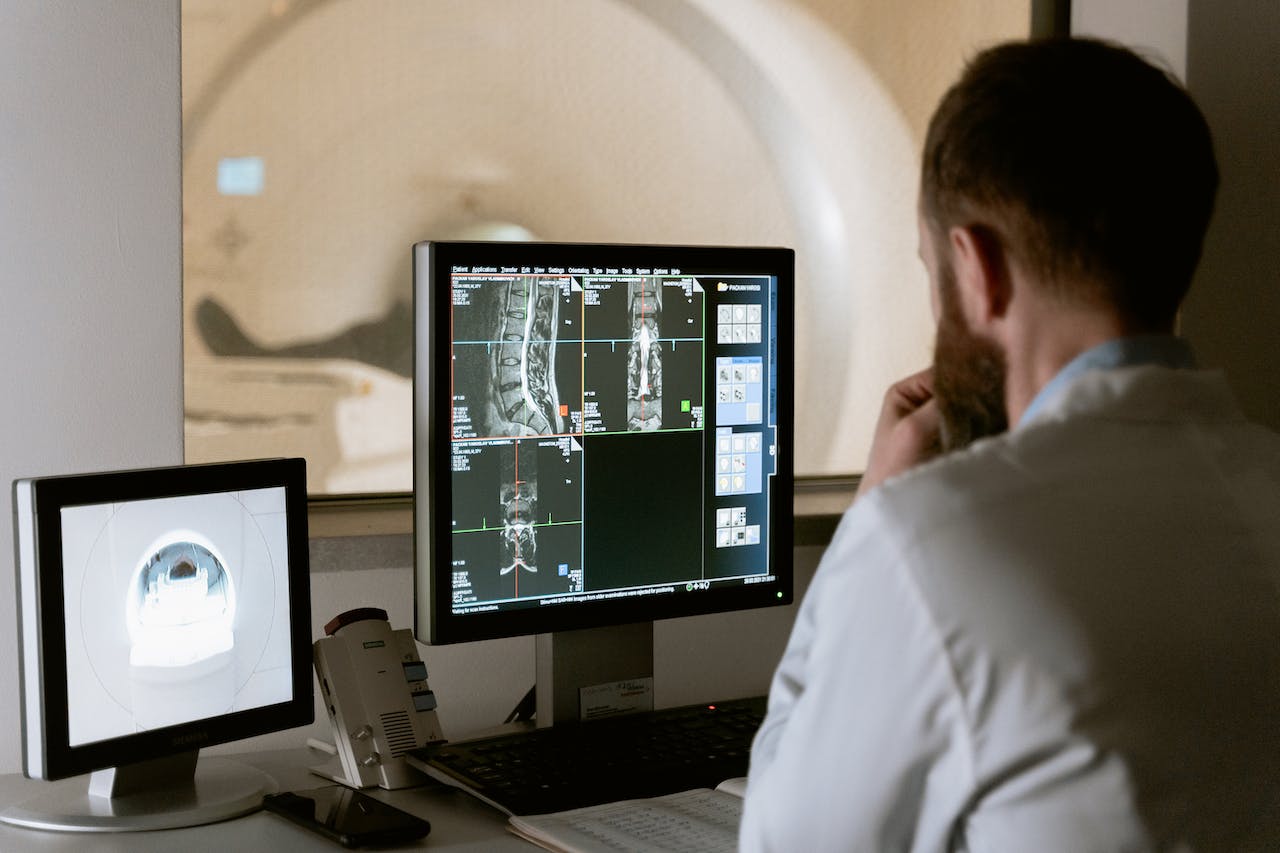Various organizations and governments have developed recognized safety standards for RF radiation. In the United States, these are based on recommended exposure limits from the National Council on Radiation Protection and Measurements (NCRP).
All personnel should receive RF radiation exposure training and report any symptoms of overexposure to their supervisor or nonionizing radiation subject matter expert. Ensure that all RF equipment is properly grounded.
1. Electromagnetic Fields
EMF radiation is a broad term that encompasses several types of electromagnetic energy, from static electric and magnetic fields to radio waves, infrared light, visible light, ultraviolet rays, and X-rays. All of these forms are non-ionizing and come from both natural and man-made sources, including radon gas, the Earth’s radioactive elements, and cosmic rays that hit the planet from beyond the solar system. Many of these forms of EMF are harmless, but others have been shown to cause certain health problems, most notably a cancer known as glioma.
Most of the EMF in our environment comes from sources like power lines, mobile phone towers, broadcast towers and similar transmitters. However, there is considerable controversy over whether these EMFs actually pose a risk to human health. Most scientific evidence does not demonstrate a direct causal link between typical exposure to EMF and adverse health effects, such as fatigue, loss of concentration, sleep disturbance and headache, although some research has suggested that these effects may be due to “electro hypersensitivity”.
Even the most basic electrical appliances produce small amounts of both electric and magnetic field radiation. These include microwave ovens, cordless phones, smart meters and most household electronics, including televisions. However, the EMF background level drops off dramatically as distance from the source increases. For example, most TVs with liquid crystal display (LCD) screens do not emit significant EMF radiation when they are watched from a couch several feet away.
The World Health Organization’s International Agency for Research on Cancer convened a group of scientists to evaluate the EMF exposure risks that humans face. Among its conclusions was that there is insufficient evidence to prove that extremely low frequency electromagnetic fields (ELF-EMF) are carcinogenic to humans, but that prolonged exposure to high levels of power-frequency magnetic fields might be associated with a small increase in the risk of leukemia in children.
Other agencies within the Federal Government have been involved in monitoring, researching or regulating issues related to RF exposure. These include the FDA, EPA, NIOSH and OSHA. These agencies have established recognized safety guidelines for RF environmental exposure separately for the general public and workers.
2. Heating
The RF energy of a radio transmitter or broadcast antenna produces electromagnetic fields that can cause heating in the tissues of exposed people and animals. This heating is not ionizing radiation because the frequency of the RF energy is too low to cause ionization. However, the RF field intensity at the exposure level can be high enough to create significant discomfort or other problems.
The body’s ability to dissipate a given amount of heat can be overwhelmed by high-intensity RF fields, and the heat may damage the tissues. The eyes and testes are particularly vulnerable to this type of tissue damage, because these areas have few blood vessels to carry away the excessive heat load.
In some cases, the RF heating causes burns and other injuries to the skin. In addition, the heat produced in the eyes and testes can be absorbed into the bone structure and cause permanent eye or reproductive organ damage. This type of damage is called non-thermal radiation injury.
RF and microwave radiation are classified as nonionizing because the energy of the RF or MW field is too low to ionize the atoms of exposed tissues. However, at high RF or MW power densities, the RF field can still cause heating of tissues and other effects not related to tissue heating.
Exposure standards have been established by various governments and organizations for RF exposure to the general public and workers. These exposure limits, known as Maximum Permissible Exposure (MPE) limits, are based on the large body of scientific knowledge available regarding RF biological effects.
It is recommended that workers stay as far away from RF or MW sources as possible and limit their exposure time to the MPE limits. If access is needed for routine maintenance or for the repositioning of antennas, employees should be trained in the proper operation and safety precautions of the equipment.
Whenever possible, insulated hand tools should be used instead of metal ones. Insulated platforms and shoes can help to reduce energy absorption and currents to ground. Workers should be removed from areas of exposure as soon as possible and should be offered cool drinking water and ice to help alleviate discomfort. In the event of a severe exposure, workers should be taken to a medical facility for evaluation by a physician.

3. Radio Frequency Radiation
Radio frequency (RF) radiation is energy that transmits information through wireless communication systems such as cellular telephones, radar traffic control devices, and radio transmission. RF energy can produce effects that vary by the frequency and intensity of the fields, the distance from the source and the shielding that may be used.
RF energy can cause injuries by heating body tissues. These are called thermal effects and have been the subject of much research. At very high levels of RF energy, the heat can be so great that it can burn or scorch tissue. This damage is more likely to occur in parts of the body that are less efficient at dissipating heat, such as the eyes and testes.
In addition, RF radiation can interfere with electronic equipment such as cardiac pacemakers or defibrillators. Studies have shown that RF waves can affect the operation of these devices if they are placed close to them. Some people have also reported that RF waves can disrupt the operation of some hearing aids.
Non-thermal RF field exposure can also cause harmful health effects. These include electric and magnetic stimulation of the brain’s excitable tissues, changes in heart rate and blood pressure, altered nerve impulses, headache, fatigue, dizziness, nausea, sleep disturbances and skin problems. There is some evidence that RF exposure can alter metabolism and cause cancer, but this has not been proven conclusively.
Health Canada scientists carefully review all peer-reviewed scientific studies of possible adverse health effects from exposure to RF fields on an ongoing basis and use a weight-of-evidence approach to evaluate them. This approach takes into consideration not only the quantity of studies done on a particular endpoint, but also the quality of those studies. Poorly conducted studies receive a lower weight, while well-designed and executed studies that are replicated and have adequate dosimetry and controls get more weight. Based on this extensive body of evidence, a risk assessment committee has developed exposure limits for RF radiation that are protective of human health. These are known as Safety Code 6 limits. The limits are periodically reviewed to ensure that they reflect the latest science.
4. Health Effects
The ability of RF and 60-Hz EMF to cause tissue heating at power densities lower than that needed to cause heating due to radiation-induced heating has stimulated a great deal of research on the possible health hazards associated with RF exposure. The resulting body of work has produced both thermal and non-thermal effects that have been studied in detail.
The non-thermal effects of RF radiation are those related to the stimulation of nerve tissue and the action of RF energy on living tissues as it passes through the human body. The sensitivity of different areas of the body to the effects of RF EMF is primarily related to their blood supply and the ability of these tissues to dissipate heat generated by RF energy. Two such areas that are most susceptible to the effects of RF EMF are the eyes and the testes, both of which lack adequate blood flow to help them cope with or dissipate excess heat generated by RF energy.
For these reasons, a number of people have reported suffering from various ailments as a result of their use of cell phones and other portable communication devices. Nevertheless, there is currently no scientific basis to support the claims that these maladies are caused by RF radiation. In fact, numerous scientific studies have been conducted and, in general, the results of these studies have not been consistent with the claim that RF radiation causes these ailments.
To provide additional protection against potential RF exposure, some individuals opt to use an EMF hat. EMF hats are designed to shield the head and brain from electromagnetic radiation, potentially reducing the risk of adverse health effects associated with RF exposure.
To protect the public, national and international exposure limits have been established based upon a careful evaluation of the relevant peer-reviewed scientific literature. These exposure limits are based on thresholds for known adverse effects and incorporate prudent margins of safety. In determining these limits, the FCC has consulted with the Environmental Protection Agency (EPA), the Food and Drug Administration (FDA) and the National Institute of Occupational Safety and Health (NIOSH).

